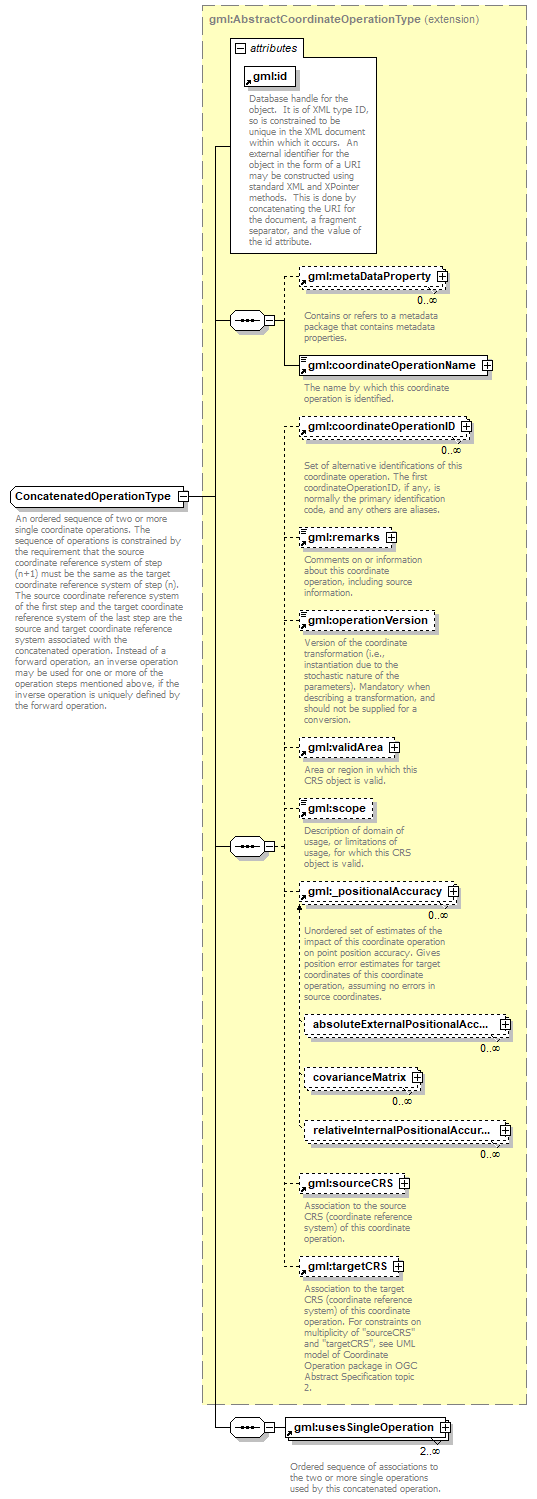| diagram |  |
||||||||||||||
| namespace | http://www.opengis.net/gml | ||||||||||||||
| type | extension of gml:AbstractCoordinateOperationType | ||||||||||||||
| properties |
|
||||||||||||||
| children | gml:metaDataProperty gml:coordinateOperationName gml:coordinateOperationID gml:remarks gml:operationVersion gml:validArea gml:scope gml:_positionalAccuracy gml:sourceCRS gml:targetCRS gml:usesSingleOperation | ||||||||||||||
| used by |
|
||||||||||||||
| attributes |
|
||||||||||||||
| annotation |
|
||||||||||||||
| source | <xs:complexType name="ConcatenatedOperationType"> <xs:annotation> <xs:documentation>An ordered sequence of two or more single coordinate operations. The sequence of operations is constrained by the requirement that the source coordinate reference system of step (n+1) must be the same as the target coordinate reference system of step (n). The source coordinate reference system of the first step and the target coordinate reference system of the last step are the source and target coordinate reference system associated with the concatenated operation. Instead of a forward operation, an inverse operation may be used for one or more of the operation steps mentioned above, if the inverse operation is uniquely defined by the forward operation.</xs:documentation> </xs:annotation> <xs:complexContent> <xs:extension base="gml:AbstractCoordinateOperationType"> <xs:sequence> <xs:element ref="gml:usesSingleOperation" minOccurs="2" maxOccurs="unbounded"> <xs:annotation> <xs:documentation>Ordered sequence of associations to the two or more single operations used by this concatenated operation. </xs:documentation> </xs:annotation> </xs:element> </xs:sequence> </xs:extension> </xs:complexContent> </xs:complexType> |
XML Schema documentation generated by XMLSpy Schema Editor http://www.altova.com/xmlspy